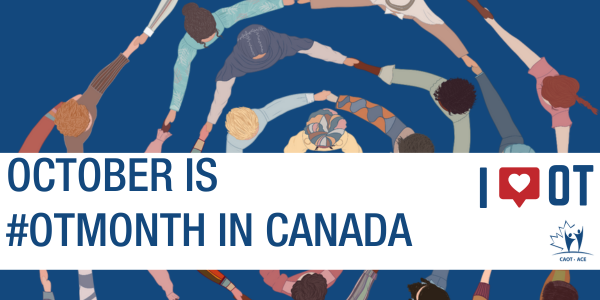Unmasking PTSD: How Occupational Therapy Supports Healing
Living with a mental health or substance use challenge is hard, and trying to hide it is even harder.
Mental Health Week 2025 invites us all to “Unmask Mental Health.” It’s a call to peel back the masks we hide behind—especially when it comes to conditions like Post-Traumatic Stress Disorder (PTSD).
PTSD can affect anyone who has experienced trauma, and its impact is personal and often invisible. From disrupted sleep to difficulty maintaining relationships or routines, the effects of PTSD can ripple through every aspect of daily life. Occupational Therapists (OTs) are trained to help individuals navigate these challenges, supporting them on their journey to recovery and renewed independence.
Understanding PTSD and the Mask We Wear
PTSD doesn’t always look how we expect it to. It can present in many ways, including:
- Flashbacks or intrusive memories
- Heightened anxiety or hypervigilance
- Avoidance of certain people, places, or activities
- Emotional numbness or difficulty concentrating
Because these symptoms can be difficult to explain—or even recognize—many people “mask” their struggles to maintain a sense of normalcy. Stigma, shame, or fear of being misunderstood can lead to avoidance behaviors and self-stigma, making healing even more challenging.
Unmasking these hidden struggles is a powerful first step toward healing. By acknowledging our mental health challenges, we can access the support we need to recover.
How Occupational Therapy Helps with PTSD
1. Creating a Safe Space for Unmasking
Occupational Therapists provide a compassionate, judgment-free environment where clients can begin to unpack their experiences. OTs help individuals build self-awareness and learn emotional regulation techniques that reduce overwhelm and increase a sense of control.
2. Helping with Daily Routines and Independence
PTSD can make even simple daily tasks feel overwhelming. OTs support clients in:
- Identifying and managing triggers during everyday activities
- Returning to previously avoided daily activities
- Rebuilding routines that conserve energy and reduce stress
- Using pacing and prioritization techniques to avoid burnout
- Implementing gradual exposure strategies in safe, real-world settings to rebuild confidence
3. Mind-Body Connection: Regaining Control
Healing from trauma involves more than just talking. Occupational Therapists use sensory-based interventions, such as grounding exercises, to help clients stay present. Mindfulness strategies and breathing techniques can reduce anxiety and reconnect clients with their bodies in a safe, empowering way.
4. Supporting Work & Social Life
Whether returning to work, school, or social activities, PTSD can create barriers that feel insurmountable. OTs provide:
- Tailored strategies for reintegrating into the workplace
- Techniques to reduce social isolation
- Support in accessing community resources to build a strong, supportive network
Breaking the Stigma: How You Can Help
Unmasking mental health is a collective effort. You can support this movement by:
- Starting open conversations about PTSD and mental wellness
- Encouraging loved ones to seek professional help when needed
- Offering support without judgment—sometimes just listening can make a big difference
This Mental Health Week let’s challenge ourselves to unmask PTSD and other hidden mental health conditions. With the right support, healing is possible. Occupational Therapists are here to walk alongside individuals as they rebuild their lives, routines, and sense of self.
If you or someone you know is struggling, don’t wait. Reach out for help today.
Resources
- Crisis Support: Talk Suicide Canada (1-833-456-4566)
Contact Us
Looking for support from an Occupational Therapist? Our team is here to help.
Email: referrals@ot-works.com
Phone: 604.696.1066 ext. 1000.
Welcoming Theo Ortega to OT Works!
We are thrilled to introduce Theo Ortega, the newest member of the OT Works! team. Joining us in January 2025, Theo brings a wealth of experience, cultural insight, and dedication to helping clients regain their independence and engage in the activities that matter most.
Theo is passionate about delivering personalized care and fostering collaboration with clients. His approach focuses on empowering individuals to overcome challenges and rediscover their confidence.
Having traveled extensively across North and South America, Europe, and Asia, Theo has cultivated a deep cultural awareness that informs his ability to tailor his support to each client’s unique needs. He has worked with diverse populations in Canada, the United States, and the Netherlands, focusing on a wide range of conditions, including:
- Musculoskeletal and orthopedic injuries
- Oncology-related conditions
- Chronic pain
- Concussions and traumatic brain injuries
- Complex diagnoses
Theo spent much of his career practicing in Toronto, Ontario, before expanding his practice to the United States, where he focused on oncology rehabilitation and lymphedema therapy in Orlando, Florida. Additionally, his service in the Canadian Armed Forces gives him a distinctive perspective on the needs of military personnel and veterans.
Based in Victoria, Theo offers services to clients through WorkSafeBC, ICBC, private insurance, and self-pay. He is a registered member of the College of Health and Care Professionals of BC.
We are excited to have Theo join OT Works! and are confident that his skills and passion will benefit our clients and community!
Based in Victoria, Theo offers services to clients through WorkSafeBC, ICBC, private insurance, and self-pay. He is a registered member of the College of Health and Care Professionals of BC.
We are excited to have Theo join OT Works! and are confident that his skills and passion will benefit our clients and community!
Get started with an OT
If you or someone you know can benefit from the support of an occupational therapist, reach out to us today!
Email: referrals@ot-works.com
Phone: 604.696.1066 ext. 1000.
Occupational Therapists Provide Wheelchair Assessments for better quality of life
A properly fitted wheelchair, carefully chosen to meet you for your short and long-term needs can significantly increase your function and improve your quality of life. A comprehensive wheelchair and seating assessment, conducted by an Occupational Therapist (OT), is essential to getting the right fit and the right wheelchair for you.
What is a Wheelchair Assessment?
A wheelchair assessment is a thorough evaluation to determine the most suitable wheelchair and seating system for your specific current, and potential future needs. Performed by a trained and qualified occupational therapist, this assessment ensures that the wheelchair selection will provide the necessary support, comfort, and functionality you need, and that the chair can move safely and comfortably within and between environments.
Why is a Wheelchair Assessment Important?
A wheelchair assessment addresses your unique needs. It measures your upper and lower extremity strength, ability to propel/drive the chair, postural endurance, sitting balance, physical and environmental barriers, cognition, and your unique activities and goals.
Without this assessment, you may end up with a wheelchair that is uncomfortable, difficult to maneuver, or inadequate for your daily activities, leading to decreased independence and potential health risks. A well-fitted wheelchair enhances mobility, promotes independence, and supports overall health.
Who Needs a Wheelchair Assessment?
Anyone who needs a wheelchair, whether for temporarily or long-term use, benefits from a wheelchair assessment. If it is your first chair or you are looking for a replacement chair because of your changing needs, a wheelchair assessment can help you be more comfortable and more functional.
A wheelchair assessment by a regulated professional is also necessary for anyone requiring documentation to acquire funding for a wheelchair. OTs can prepare funding justification letters for extended health benefits and insurance companies that often require an OT assessment prior to funding a wheelchair.
What Happens During an OT Wheelchair Assessment?
- Interview: The process begins with an in-depth conversation about your daily routines, health history, and specific needs and goals.
- Environmental Considerations: The assessment considers the environments where you will use the wheelchair, such as the home, workplace, or community settings, and whether it will be needed outside or inside, on transit or while driving.
- Physical Examination: The OT completes a screen of your physical, functional abilities and identifies any safety concerns.
- Measurements: The OT takes precise measurements to ensure the wheelchair will fit and support your body.
- Trial and Fitting: You may trial various wheelchair options to find the best fit, and adjustments are made as necessary.
- Training and Education: Once the ideal wheelchair system is selected, the OT may provide you and/or your caregivers with education and training on its use, maintenance, and safety.
What OTs Assess in a Wheelchair Assessment
OTs consider a variety of factors during the assessment, including:
- Medical Profile: Awareness of a specific diagnosis or prognosis relevant to the wheelchair need, and whether the condition is temporary, stable or progressive in nature.
- Posture and Seating: Ensuring proper alignment to prevent discomfort and long-term health issues, as well as to facilitate functional goals.
- Mobility Needs: Determining the ability to move, self-propel and drive or level of assistance required for effective mobility.
- Daily Activities: Understanding how you will use the wheelchair in your everyday life.
- Environment: Understanding various settings your wheelchair will be used in.
- Safety Concerns: Ensuring the wheelchair is safe for your specific circumstances.
Collaboration
Furthermore, OTs often collaborate with other healthcare professionals, such as physiotherapists, doctors, physiatrists and rehabilitation specialists, to ensure a comprehensive and thorough understanding of your medical situation. They also collaborate with medical equipment vendors, in order to recommend the most suitable wheelchair system, considering the most up-to-date equipment available. Finally, they collaborate with you and your family members, if you are in agreement. This collaborative approach ensures that all aspects of your health and lifestyle are considered, and the best solution is identified.
Examples of Recommended Equipment
- Standard Manual Wheelchair: A manual wheelchair may be considered for the most active users with the ability to self-propel and sit for longer periods of time. They can also be designed to be attendant-propelled, in which case the sizing needs of the individual most likely to be pushing it will also be considered. Features like specialized seating and power add-on can also be considered, to offer greater support and independence.
- Tilt-in-Space Wheelchair: This type of equipment may be considered for individuals who have more complex postural needs or require greater pressure redistribution, as these wheelchairs enable changes of seating angle and pressure redistribution while maintaining support and reducing shearing effects on the skin. This type of wheelchair may also help improve the line of vision and increase the sitting tolerance.
- Power Wheelchair: A motorized wheelchair may be recommended for individuals with limited body strength, postural and/or mobility endurance. The OT will consider the user’s functional/mobility goals, ability to control the wheelchair while navigating environments and the need for additional component features, such as power tilt or recline functions.
- Custom Seating: For individuals with more specific positioning/seating needs or complex medical history, a custom seating assessment addresses areas of the wheelchair user’s needs which may fall outside of the typical user profile, such as a backrest which requires custom molding and hip guides to maintain posture or a customized headrest shape and position to accommodate a fixed neck angle. Customization requires the OT to work closely with a medical equipment vendor skilled in wheelchair customizations to ensure that the final seating system is tailored to the user’s unique requirements and long-term needs.
As equipment becomes more complex, the lengthier and more detailed the assessment becomes. Longer assessments for complex needs are more costly than short assessments for simple needs.
Summary
A wheelchair assessment may require multiple visits to ensure the best fit and functionality. Every individual person’s situation is unique, and there is no “one size fits all” approach to selecting a wheelchair system.
The skills of an Occupational Therapist and a personalized, comprehensive assessment help ensure that the investment in a wheelchair meets your specific needs. Finding the right chair that fits will lead to your comfortable participation in the things you want to do and help get you to places you want to go.
Our Team
Our OT Works! team of OTs have experience in wheelchair assessments. We provide personalized, comprehensive evaluations that result in meaningful outcomes for our clients.
Contact Us Today
If you or someone you know need a wheelchair assessment, contact us today.
Email: referrals@ot-works.com
Vancouver: 604.696.1066
Victoria: 250.999.8896
OT Works! Holiday Hours
OT Works! will be closed during the holidays.
We will be back to our regular hours on January 02, 2025, when we will be accepting new clients in Vancouver, Metro Vancouver, Fraser Valley, Sea-to-Sky, Victoria, Nanaimo, and the Comox Valley.
| Monday, December 23, 2024 | Open, 9am-5pm |
| Tuesday, December 24, 2024 | Open, 9am-12pm |
| Wednesday, December 25, 2024 | Closed |
| Thursday, December 26, 2024 | Closed |
| Friday, December 27, 2024 | Closed |
| Monday, December 30, 2024 | Closed |
| Tuesday, December 31, 2024 | Closed |
| Wednesday, January 01, 2025 | Closed |
| Thursday, January 02, 2025 | Open, 9am-5pm |
| Friday, January 03, 2025 | Open, 9am-5pm |
Regular business hours resume on January 02.
We wish you a very Happy Holidays and a Joyous New Year!
Get started with an OT
Our therapists at OT Works! are registered and in good standing with the College of Occupational Therapists of British Columbia (COTBC). Our approach is based on current research and evidence-based practice.
If you or someone you know could benefit from occupational therapy, contact us today!
Email: referrals@ot-works.com
Vancouver: 604.696.1066
Victoria: 250.999.8896
Meet Japneet Brar: Occupational Therapist
We’re excited to introduce Japneet Brar, MScOT, to OT Works!
Japneet joined us in July 2024 and brings a strong academic background and diverse clinical experience.
She earned her Master of Science in Occupational Therapy from the University of Toronto in 2022 and holds a Bachelor’s degree in Cognitive Systems from the University of British Columbia.
Japneet has worked in various settings, including acute care, community outreach, and clinics, where she has supported clients with conditions such as traumatic brain injuries, orthopedic injuries, chronic pain, and more.
Japneet offers her services to clients across the Fraser Valley, including Abbotsford, Chilliwack, Surrey, and Langley. She works with individuals covered by WSBC, ICBC, private insurance, and self-paying clients. Japneet is a registered member of the College of Health and Care Professionals of BC (CHCPBC).
We’re excited to have Japneet on board and look forward to the valuable contributions she’ll make.
Get started with an OT
If you or someone you know can benefit from the support of an occupational therapist, reach out to us today!
Email: referrals@ot-works.com
Phone: 604.696.1066 ext. 1000.
Meet Katy Lovick: Occupational Therapist
We’re pleased to welcome Katy Lovick, new occupational therapist, to OT Works!
Katy joined OT Works! in January 2024. She brings with her a wealth of experience in helping clients with various diagnoses, such as brain injuries, neurological conditions, physical injuries, amputations, and mixed diagnoses.
Katy holds a master’s degree in occupational therapy from Glasgow Caledonian University, and a Bachelor of Sport & Fitness Leadership – specialization in exercise and wellness, from Camosun College.
Katy is passionate about the versatility of occupational therapy and has worked in both private and public health sectors. She embraces a client-centered approach, recognizing that everyone has unique strengths and challenges on their path to recovery. Katy has successfully supported clients in meaningful activities, including daily living tasks, returning to work, and engaging with their communities. She brings professionalism, experience, and a commitment to excellence to every client interaction.
In her spare time, Katy enjoys all the nature that Vancouver Island has to offer, travelling and getting active.
Katy serves a diverse clientele, including individuals covered by WSBC, ICBC, private-paying clients, and those with extended health/disability insurance. She provides her services across South Vancouver Island, including Victoria, Langford, Saanich, and Sidney.
Katy is a full registrant and in good standing with the College of Occupational Therapists of British Columbia (COTBC).
We’re thrilled to have her on board and look forward to the positive impact she’ll make in our community.
Get started with an OT
If you would like Katy’s help with your recovery or if someone you know could benefit from occupational therapy, contact us today!
Email: referrals@ot-works.com
Phone: 604.696.1066 ext. 1000.
What to expect of an Occupational Therapy Assessment
An occupational therapy assessment is an important first step in your recovery journey. That’s when your OT will understand where you’re at, what you are struggling with, and where you want to go next. It also helps the OT justify funding for treatment services, if needed, and develop a safe, effective treatment plan.
Our dedicated Occupational Therapists (OTs) are committed to providing you with individualized, meaningful, and creative ways to support your recovery journey.
Recovering from an injury is hard, but getting back to the activities you love is worth it!
Occupational Therapists are unique
OTs are university-trained, certified, and regulated by the College of Occupational Therapists of British Columbia (COTBC).
What sets OTs apart is their holistic approach to your needs. Unlike other professions that focus on either physical or emotional parts of your injury, OTs consider physical, cognitive, emotional, cultural and environmental factors to ensure that your recovery is safe, meaningful and effective. They also focus and build upon your strengths and priorities.
OTs meet you in real-life environments: at your home, workplace, and community settings, ensuring that the treatment aligns with your reality and daily life and has real impact.
Occupational Therapy can help in a variety of situations, including but not limited to:
- Home safety
- Ergonomics
- Activation
- Mood management
- Concussion rehabilitation
- Community access
- Return to work
Our OTs help you getting better and improving your quality of life.
Our OTs have experience in providing OT treatment for physical injuries, mental health concerns, and brain injuries. They are passionate about delivering quality treatments tailored to your unique needs.
What to expect from your OT assessment
When someone requests the help of our OTs, we get any necessary medical information to ensure a safe assessment, and we choose an occupational therapist with the right skill set and approach to assist you. However, the OT assessment primarily involves an in-person meeting with you.
Some important information about the assessment:
- Location: Most assessments occur at your home, but may also occur at your workplace, or somewhere else in your community, depending on what is being assessed. Some specialized assessments may be conducted at our clinic in New Westminster.
- Duration: Typically, 2-3 hours.
- Components: Review of what to expect, risks and benefits (consent), an interview, observations of your daily activities, and standardized tests or questionnaires.
Your therapist will be on time, and treat you with respect, care, professionalism, and courtesy throughout the assessment. There is no judgement, nor expectation that you clean or prepare refreshments ahead of time.
If you anticipate being at all uncomfortable, just let your therapist know in advance, and invite a friend or family member to attend with you.
We expect that you provide more than 24 hours’ notice if you need to change the assessment time.
Getting ready for your OT assessment
Preparing for your assessment is easy:
- Gather Information: Relevant medical details, recent test results, and current medications.
- Review Daily Activities: Consider your daily routine and note areas of difficulty.
- Communicate: Share your goals, concerns, and relevant information during the assessment. Ask lots of questions.
- Wear Comfortable Clothing: Choose clothes that allows for easy movement.
- Be ready to “do”: the OT may ask you to show how you do certain tasks (or portions of tasks) around the house, such as sweeping, making the bed, working on the computer or emptying the dishwasher. You will not be asked to do anything that is unsafe, and the OT will provide tips and strategies to make things easier on you, right away.
Collaborative Plan for Treatment
Before completing the assessment, the OT will briefly review their findings, explore your personal, functional goals, and review possible treatments for feedback. Examples of what an OT may recommend could include: equipment, learning and practicing techniques or strategies, grading tasks (gradually making them more challenging), homework between sessions and/or referral to other health care professionals.
At OT Works!, our therapists take a collaborative approach. We listen to you, design treatment plans, and set goals with your input to ensure that your recovery is not only meaningful but also appropriate to your situation.
We communicate directly using your preferred method, welcoming feedback to enhance each client’s experience.
What happens after the OT assessment
Confidential Report
The OT prepares a comprehensive report detailing functional strengths, difficulties and treatment recommendations. With your consent, this report can be shared with medical providers and funding parties.
Approval
If OT treatment services are recommended, the plan and goals are shared with the funder for approval (whether that’s an insurance representative, family member or other party). Ideally, occupational therapy treatment is approved and initiated within one week of the in-person assessment. Sometimes the OT will set up your first treatment session, as they leave the assessment, in anticipation of this.
However, there can sometimes be delays in obtaining approval. Your therapist will keep you updated on the process if this is the case and will advocate for service on your behalf. They also may provide you with some activities or strategies to get started with, on your own, if appropriate and safe, to facilitate an early recovery.
Once treatment is underway, your engagement, motivation and feedback will help pave the way to a new you, and the meaningful life you seek.
Contact us for your Occupational Therapy assessment
If you or someone you know could benefit from an occupational therapy assessment, don’t hesitate to contact us today!
Email: referrals@ot-works.com
Vancouver: 604.696.1066
Victoria: 250.999.8896
Start Occupational Therapy after a car accident
Get help. Get better. Get well.
Ask for OT for your ICBC claim.

You have been injured in a car accident, and you have not fully recovered. You want to get back to your regular life, but you are not sure how or where to get started. Ask for Occupational Therapy (OT) for your ICBC claim.
Occupational Therapy is fully covered by ICBC.
Occupational therapy can help you put the pieces together that you need to get better. OTs provide individualized care that is specific to you, your injuries, and your life. They listen to you and focus their work on your goals and what is meaningful to you.
We can help you to get back to living your life after a car accident.
How OT can help after an accident
An Occupational Therapist can help you in many ways after a car accident.
We focus on your function and help you perform a wide variety of activities. Whether you’re having physical, cognitive, and emotional difficulties, an OT can help. We see each person as unique and tailor our approach to you.
An Occupational Therapist can help you with activities like:
- Preparing you and your home for your discharge from hospital
- Restoring basic activities, like bathing, dressing, grooming and personal hygiene
- Getting you back to activities like home making, finances, meal planning, community access
- Leisure and recreation
- Getting back to school or work
- Return to driving
Click here to learn how an OT can assist you in different stages of your recovery.
OT is fully covered by ICBC
Occupational therapy is covered under ICBC’s Enhanced Care model. There are no user-fees for OT.
However, OT is not pre-approved like other health professions. To have an OT help your recover, your ICBC claims specialist must approve OT involvement. To get approval, you will need a referral from your GP or a doctor’s note. Talk to your doctor if an OT would be right for you.
If ICBC has already approved funding for Occupational Therapy for you, simply email us the written authorization, and we will assign an OT to assist you.
ICBC must approve OT services before you start with an OT.
Get Started with an OT
After reporting a claim to ICBC, you can ask your ICBC Recovery Specialist for OT. You can also contact our Referrals Team at OT Works! to discuss your situation. You can reach us by phone, email or on our website:
- By phone, at (604)696-1066
- By email, at referrals@ot-works.com
- By sending the referral form to us by email or fax
You need a GP referral (or Doctor’s note) for ICBC to pay for OT services.
What do I need to get started?
You will need to provide some personal information, ICBC claim details, and a GP note.
Your GP note should state the reason for referral and how it’s related to the MVA.
Our Referrals Team will then guide you through the process.
If you are not sure if OT has been approved, our Referrals team will contact ICBC and/or your legal counsel on your behalf to secure funding.
How much does OT cost?
If ICBC has approved OT services for you, our OT services will be fully paid by ICBC. There are no user fees and you don’t have to pay anything out of pocket.
NOTE: ICBC will not pay for OT services that have not been approved. We recommend always getting ICBC approval before starting with an OT. If you are not sure how to get the approval, give us a call and we can help
When can I start working with an OT?
It depends, but our goal is to make the whole process as fast as possible. We always try to assign the best OT that matches your situation and find the right fit for you. It may take some time for the right OT to become available. Our Referrals team will keep you informed during the process and inform you of any wait times.
Who will contact ICBC to get approval for Occupational Therapy?
Our Referrals team and/or your legal counsel will contact ICBC on your behalf to get approval for OT.
Where are OT services delivered?
Our OTs work in the community, and can see you in your home, workplace or in a community setting (park, community center).
We can also offer telehealth if that’s appropriate for your situation.
OT Works! has OTs available in the following areas:
- Lower Mainland: Vancouver, Burnaby, New Westminster, Surrey, North & West Vancouver, Richmond, Delta, Port Moody, Coquitlam, Port Coquitlam, Langley, Maple Ridge, Pitt Meadows
- Fraser Valley: Mission, Abbotsford, Chilliwack
- Sea-to-Sky: Squamish, Whistler, Pemberton
- Sunshine Coast: Gibsons, Sechelt
- Vancouver Island:
- South: Victoria, Esquimalt, Sooke, East Sooke, Saanich, Sidney, Langford, Colwood, Metchosin
- Central: Nanaimo, Parksville, Ladysmith, Qualicum Beach, Port Alberni
- North: Campbell River, Courtney, Comox, Cumberland, Fanny Bay, Nanoose Bay, Union Bay
Are all of your OTs approved by ICBC?
All our OT’s are authorized by ICBC to provide OT services. Occupational Therapists s are university-educated professionals, registered by the College of Occupational Therapists of BC.
Get started today
Ask for OT!
If you are ready to start your rehabilitation after a car accident, ask for OT and contact us today.
Our OTs will be happy to help you getting back to the life you love!
Photo by Daniel Xavier from Pexels
Meet Heidi Nygard: Occupational Therapist
We’re excited to announce the newest addition to our team, Heidi Nygard, a dedicated occupational therapist at OT Works!
Since joining us in August 2023, Heidi has been instrumental in delivering exceptional community-based OT services, focusing on enhancing individual independence and helping clients achieve their goals through tailored daily activities at home, work, and within their communities.
Heidi holds a master’s degree in occupational therapy from UBC, bringing knowledge to support individuals with learning disabilities and leveraging assistive technology within her clinical practice.
With experience spanning diverse populations in return-to-work, post-secondary, and community home health settings, Heidi has assisted clients dealing with various challenges, including mental health conditions, chronic pain, concussion/traumatic brain injury, and complex diagnoses, guiding them toward achieving their meaningful and purposeful goals.
Before embarking on her journey as an OT, Heidi contributed her skills to various roles, including serving as a Case Manager in a community employment program, working as a library technician in a Braille library, and acting as a learning strategist/assistive technologist for students with disabilities at UBC.
Heidi caters to a diverse clientele, encompassing individuals covered by WSBC, ICBC, private-paying clients, and those with extended health/disability insurance. She serves clients in the Central Vancouver Island area, including Ladysmith, Duncan, and Nanaimo.
Heidi is a full registrant and in good standing with the College of Occupational Therapists of British Columbia (COTBC).
Get started with an OT
If you or someone you know can benefit from the expertise and support of an occupational therapist, reach out to us today!
Email: referrals@ot-works.com
Phone: 604.696.1066 ext. 1000.
Join us in celebrating Occupational Therapy: October is OT Month!
Every October, OT Works! takes pride in celebrating our exceptional team of Occupational Therapists and the impact they have on the lives of our clients.
Unity Through Community
OT month is celebrated both locally and internationally, with October 27th being recognized as World Occupational Therapy Day. This year, we are inspired by the theme proposed by The World Federation of Occupational Therapists (WFOT): “Unity Through Community.”
Occupational Therapists play a crucial role in facilitating their clients’ recovery and well-being by fostering collaboration with other healthcare professionals. This collaborative approach ensures that our clients receive the holistic and comprehensive care they deserve.
“To have real impact, and truly make a difference in our clients’ lives, we must work together. Every discipline brings different tools and perspectives, and when we coordinate our efforts and focus on the client’s goals, meaningful change happens.”
Pamela Russell, Clinical Director, OT Works!
Lighting up the country for World OT Day

To raise awareness about the field of occupational therapy and to acknowledge the contributions made by OTs since the inception of the profession in 1926, landmarks across Canada will be illuminated in blue on October 27th, celebrating World OT Day.
In BC, the BC Place Stadium and the Science World in Vancouver will be bathed in blue light to celebrate OT Day!
Occupational Therapy at OT Works!
AT OT Works!, our team of dedicated therapists is certified by the College of Occupational Therapists of British Columbia (COTBC). They are skilled in treating clients with a wide range of needs, including physical injuries, mental health conditions, and brain injuries.
Our Occupational Therapists serve communities across the Lower Mainland, Fraser Valley, Sea-to-Sky, and Vancouver Island. To learn more about our services, contact us.
Learn more
As we celebrate OT Month and World OT Day, we invite you to explore further resources and insights about occupational therapy through the following links:
Canadian Association of Occupational Therapy (CAOT)
World Federation of Occupational Therapy
Join us in recognizing the incredible impact of Occupational Therapists, and for being a part of our mission to empower individuals in their pursuit of a better quality of life.
Happy OT Month!










